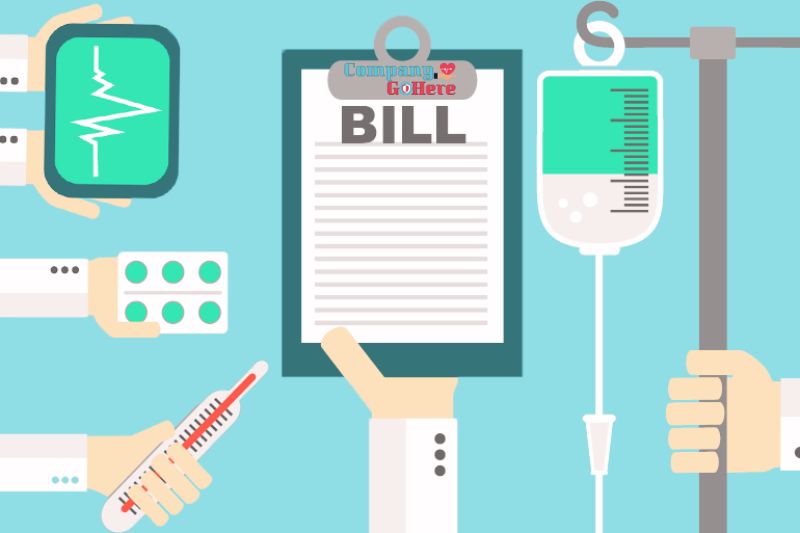Curious about medical payments coverage? You’re in the right place! At CompanyGoHere, we explain what it is, how it works, and why it might be essential for you. Dive in to see why it’s a key feature of the best insurance companies 2024.
What is Medical Payments Coverage (MedPay)?
Medical Payments Coverage (MedPay) is a key component of auto insurance that provides financial protection for medical expenses incurred due to a car accident, regardless of who is at fault.
This coverage can be a lifesaver, ensuring that you and your passengers receive the necessary medical care without worrying about the immediate financial burden.
MedPay is often compared to other forms of auto insurance coverage, such as Personal Injury Protection (PIP).
While both cover medical expenses, MedPay is usually simpler, focusing exclusively on medical costs rather than additional benefits like lost wages or other services covered by PIP. Understanding the nuances of MedPay can help you make informed decisions about your auto insurance policy.
What Medical Payments Coverage Includes?

MedPay covers a wide range of medical expenses resulting from car accidents. Here’s what you can typically expect:
- Medical Treatments: This includes costs for surgeries, hospital stays, and physician fees.
- Ambulance Fees: Transportation costs to the hospital via ambulance are covered.
- Emergency Room Services: Expenses incurred in the emergency room, including diagnostic tests and treatments.
- X-rays and Diagnostic Tests: Costs for necessary imaging and lab tests.
- Prostheses and Medical Supplies: Expenses for medical devices and supplies needed for recovery.
- Funeral Costs: In tragic cases, MedPay can cover funeral expenses.
Each policy has coverage limits, so it’s crucial to understand the terms of your specific policy to ensure it meets your needs. For example, a typical MedPay policy might cover medical expenses up to $10,000 per person per accident.
How to Add MedPay to Your Auto Insurance Policy

Adding MedPay to your auto insurance policy is straightforward. Here’s how you can do it:
- Review Your Current Policy: Understand what your current auto insurance covers and identify any gaps.
- Consult Your Insurance Agent: Discuss your needs and explore the options for adding MedPay to your policy.
- Choose Coverage Limits: Decide on the amount of coverage you need. Consider factors such as your health insurance coverage and typical out-of-pocket expenses.
- Compare Providers: Look at different insurance providers and their MedPay options to find the best fit for your needs and budget.
- Finalize and Update Your Policy: Once you’ve selected the coverage, update your policy to include MedPay.
When selecting coverage limits, it’s important to balance affordability with adequate protection. If you have excellent health insurance, you might opt for lower MedPay limits.
Conversely, if your health insurance has high deductibles or limited coverage, higher MedPay limits could be beneficial.
MedPay vs. Personal Injury Protection (PIP)
Both MedPay and PIP are designed to cover medical expenses, but there are key differences between the two:
- Coverage Scope: MedPay exclusively covers medical expenses, whereas PIP also covers lost wages, substitute services, and funeral expenses.
- State Requirements: PIP is mandatory in many states and includes broader coverage, while MedPay is often optional.
- Cost: MedPay typically costs less than PIP due to its narrower focus.
In states where PIP is mandatory, you might not have the option to purchase MedPay. However, in states where both are available, understanding the differences can help you choose the best option for your circumstances.
Claiming MedPay Benefits
Filing a claim is a crucial step to ensure you get reimbursed for medical expenses after an accident. Here’s how to navigate the process:
- Contact Your Insurance Provider: Inform your insurance company about the accident and your intention to file a MedPay claim.
- Gather Documentation: Collect all relevant medical bills, receipts, and documentation of medical treatments.
- Submit a Claim Form: Complete and submit the necessary claim forms provided by your insurance company.
- Follow Up: Stay in touch with your insurance provider to track the status of your claim and provide any additional information they may need.
Common challenges in the claims process can include missing documentation or disputes over coverage amounts. Being thorough and prompt in your documentation and communication can help mitigate these issues.
Cost of MedPay Coverage

- Coverage Limits: Higher coverage limits result in higher premiums.
- Driver’s Age and Health: Younger, healthier drivers may have lower premiums.
- Vehicle Type: The type of vehicle you drive can influence your premium.
- Location: Premiums can vary based on your state and local regulations.
On average, MedPay premiums are relatively affordable. To reduce your MedPay premiums, consider bundling your auto insurance with other types of insurance, such as homeowners insurance or renters insurance. Additionally, maintaining a clean driving record can help keep your premiums low.
MedPay Coverage and Health Insurance
- Covering Deductibles and Copays: MedPay can pay for out-of-pocket costs that your health insurance doesn’t cover, such as deductibles and copays.
- Immediate Payment: MedPay provides quick payment for medical expenses, which can be crucial in emergencies.
- Broader Coverage: MedPay can cover medical expenses for your passengers and family members, even if they are not listed on your health insurance policy.
By using MedPay to cover gaps in your health insurance, you can ensure comprehensive protection without worrying about unexpected medical bills.
Conclusion
By understanding the ins and outs of Medical Payments Coverage, you can make informed decisions that provide financial security and peace of mind in the event of an accident.
Whether you’re adding MedPay to your existing policy or comparing it with other coverages, having the right information is key to selecting the best protection for you and your loved ones. Visit CompanyGoHere to learn more and see if it’s the right fit for you.


